Corpus Christi Blog
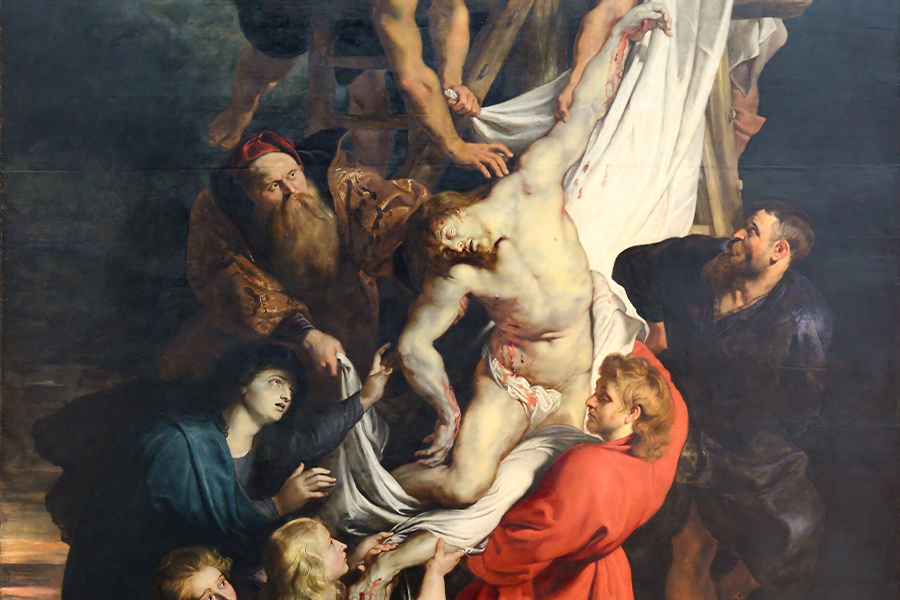
The Seven Sorrows of Mary – The Sixth Sorrow: The Pieta and The Seventh Sorrow: The Burial
03-28-2021Weekly ReflectionJen Arnold, M.A. in Theology and CatecheticsAs we enter into this final week of Lent, we will take a look at the sixth and seventh sorrows of Mary, which go hand in hand. Mary’s sixth sorrow was when Jesus was pierced in the side with a spear and then placed in her arms. The seventh sorrow is the burial of her precious Son in His tomb.
READ MORE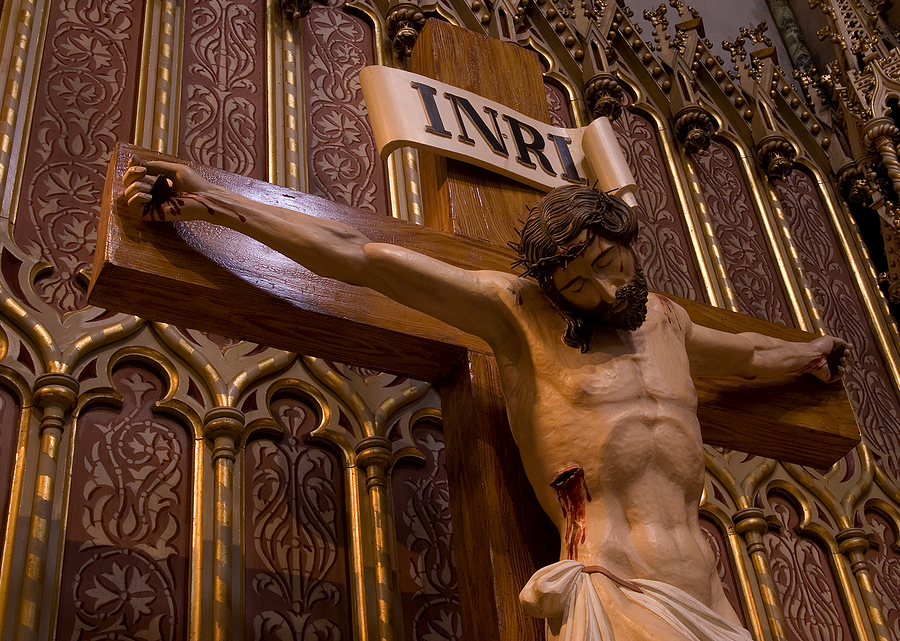
The Seven Sorrows of Mary – The Fifth Sorrow: The Crucifixion and Death of her Son, Jesus
03-21-2021Weekly ReflectionJen Arnold, M.A. in Theology and CatecheticsThis week we will reflect on the Fifth Sorrow of Mary, which is The Crucifixion and Death of Her Son, Jesus. “But standing by the cross of Jesus were his mother and his mother’s sister, Mary the wife of Clopas, and Mary Magdalene” (John 19:25).
The death of a child must be the worst suffering any parent could ever experience in any circumstance. For Mary, the pain must have been unimaginable. She not only witnessed her Son die, but she witnessed the horror of the manner of His death. She knew deeply and intimately of His perfection and innocence. She saw Him humiliated and His dignity destroyed as the soldiers stripped Him naked and cast lots for His clothing. She saw the wounds and pain from the beating He had taken earlier. She saw the crown of thrones pressing into head and she saw the sign above Him that read, “Jesus of Nazareth, the King of the Jews” (John 19:19). While Jesus was suffering in His physical body, Mary was suffering right along with Him in the deepest depths of her soul.
READ MORE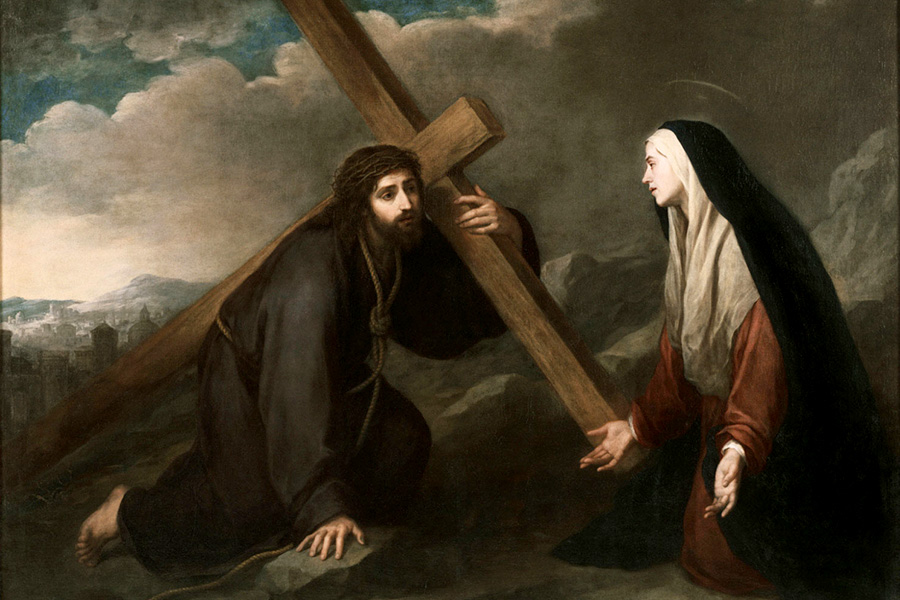
The Seven Sorrows of Mary – The Fourth Sorrow: Mary Meets Jesus on the Road to Calvary
03-14-2021Weekly ReflectionJen Arnold, M.A. in Theology and CatecheticsThis week, we start to get into the heaviest and deepest sorrows of Mary’s life, beginning with her fourth sorrow: Meeting Jesus on the Road to Calvary. Take a moment to recall Mary’s first two sorrows – the prophecy of Simeon and the flight into Egypt. Call to mind the joy she was probably experiencing at those two times, basking in the glow of being a new wife and a new mother. She was very likely experiencing strongly positive and happy feelings right before those first two blows were delivered. With her fourth sorrow, we have a similar situation, but with perhaps a bit more intensity.
READ MORE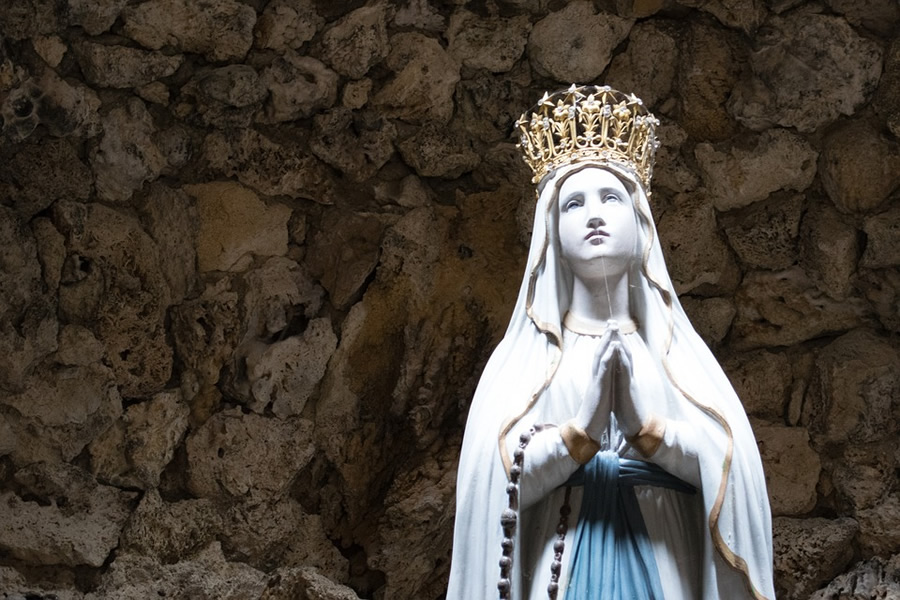
The Seven Sorrows of Mary – The Third Sorrow: The Loss of the Child Jesus in the Temple
03-07-2021Weekly ReflectionJen Arnold, M.A. in Theology and CatecheticsThe Third Sorrow of Mary is the Loss of the Child Jesus in the Temple, which we find in Luke:
...supposing him to be in the group, they went a day’s journey, but then they began to search for him among their relatives and acquaintances, and when they did not find him, they returned to Jerusalem, searching for him. After three days they found him in the temple, siƫng among the teachers, listening to them and asking them questions. (Luke 2:44-46)READ MORE
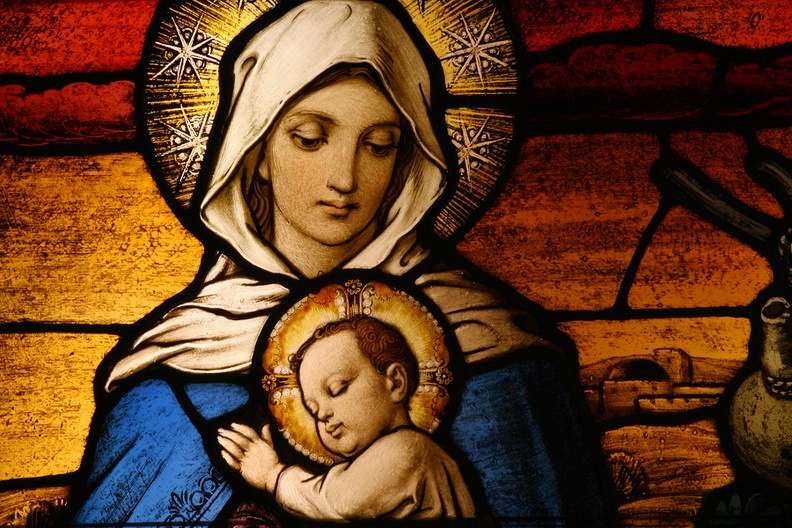
The Seven Sorrows of Mary – The Second Sorrow: The Flight into Egypt
02-28-2021Weekly ReflectionJen Arnold, M.A. in Theology and CatecheticsThis week we will examine the Second Sorrow of Mary, which was the Holy Family’s Flight into Egypt.
READ MORE…Behold, an angel of the Lord appeared to Joseph in a dream and said, “Rise, take the child and his mother and flee to Egypt, and remain there until I tell you, for Herod is about to search for the child to destroy him.” And he rose and took the child and his mother by night and departed to Egypt and remained there until the death of Herod (Matthew 2:13-15).

The Seven Sorrows of Mary – The First Sorrow: The Prophecy of Simeon
02-21-2021Weekly ReflectionJen Arnold, M.A. in Theology and CatecheticsThis Lent we will reflect on what are known as the Seven Sorrows of Mary. One of the traditional titles for our Blessed Mother is Our Lady of Sorrows, which affirms that there were moments throughout her life, found in Scripture, where we see that Mary experienced authentic human suffering, just as we all do. However, Mary is a woman of deep faith, which we see in her fiat as she tells the angel that she is the handmaid of the Lord and is open to His plan for her life without even knowing what it is (Luke 1:38). In this, she teaches us how to suffer better and in a way that grows our own faith rather than diminishes it. We also know that Mary is so deeply connected to Jesus that her sorrows are intimately joined to Him and His own suffering. Through this, she serves as an example of how to join our own personal suffering to Jesus’.
READ MORE
Holy Orders and Matrimony
02-14-2021Weekly ReflectionJen Arnold, M.A. in Theology and CatecheticsIn this last installment of this series, we will look at the final two sacraments, which are Holy Orders and Matrimony. The Catechism refers to these two as the Sacraments at the Service of Communion. They are vocational sacraments, which are ordered not only to the salvation of the one receiving the sacrament, but are also ordered toward the salvation of others, building up the Kingdom of God (CCC #1533-1534). It is by the grace of your vocational sacrament that you are able to evangelize others with Jesus’ message, be a witness of authentic Christian love, and offer your suffering for those whom you serve within your vocation.
READ MORE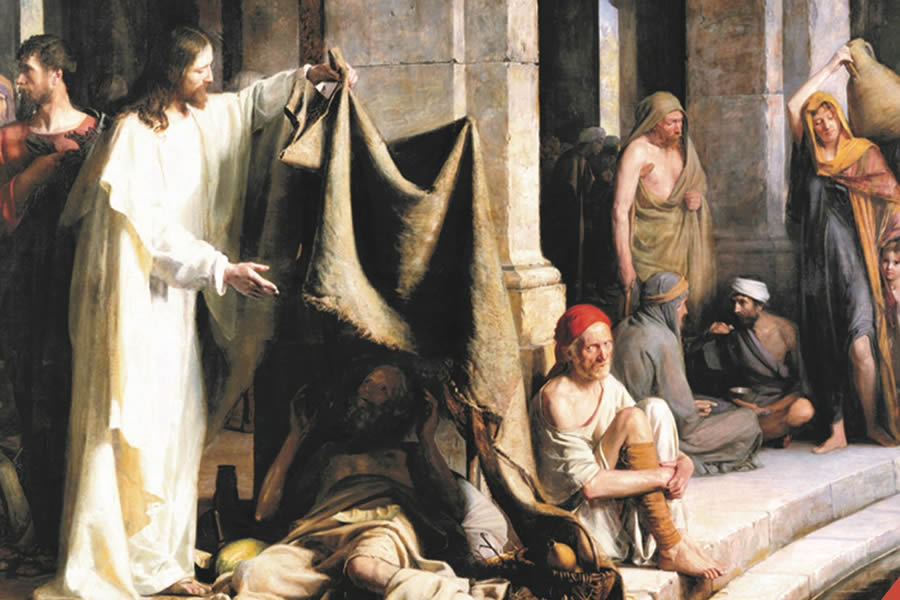
Anointing of the Sick
02-07-2021Weekly ReflectionJen Arnold, M.A. in Theology and CatecheticsThis week we will continue our examination of the sacraments with the second sacrament of healing, called Anointing of the Sick. Illness, and the suffering that comes with it, is a condition that came to humanity through Original Sin. When creating Adam and Eve, God endowed them with particular preternatural gifts, one of which was that they were never intended to suffer bodily corruption of any sort. However, with the Fall came the loss of these gifts. We were thereby subject to bodily corruption, which includes illness and eventual death. I do not have to explain that illness and suffering are tremendous problems that we deal with in our human condition, forcing us to look at our own mortality. Sometimes these realities can lead us to “anguish, self-absorption, sometimes even despair and revolt against God. It can also make a person more mature, helping him discern in his life what is not essential so that he can turn toward that which is” (CCC #1501). To the end of helping us use our suffering from illness to turn toward God, rather than away, Jesus gave us this particular sacrament to offer the divine grace we need for perseverance and healing, whether physical or spiritual (CCC #1500-1501).
READ MORE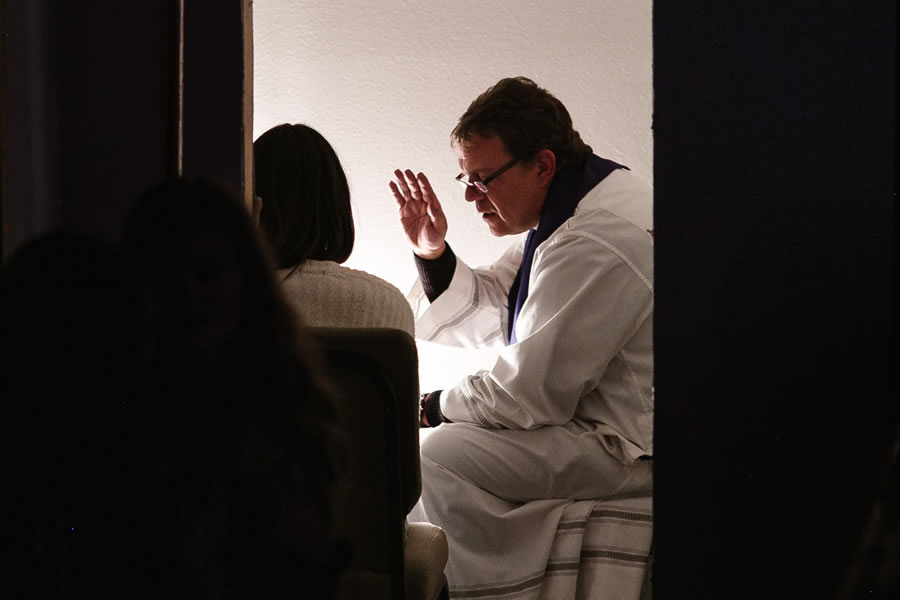
Reconciliation
01-31-2021Weekly ReflectionJen Arnold, M.A. in Theology and CatecheticsIn our continued study of the seven sacraments, the next two fall under the category of the sacraments of healing. Although we are full members of the Church through the sacraments of initiation, we need to be continually healed by the Divine Physician throughout our journey to heaven. Despite being members of the body of Christ, “we are still in our ‘earthly tent,’ subject to suffering, illness, and death. This new life as a child of God can be weakened and even lost by sin” (CCC #1420). Therefore, we have the sacraments of Penance & Reconciliation and Anointing of the Sick to provide us spiritual healing from our human condition.
READ MORE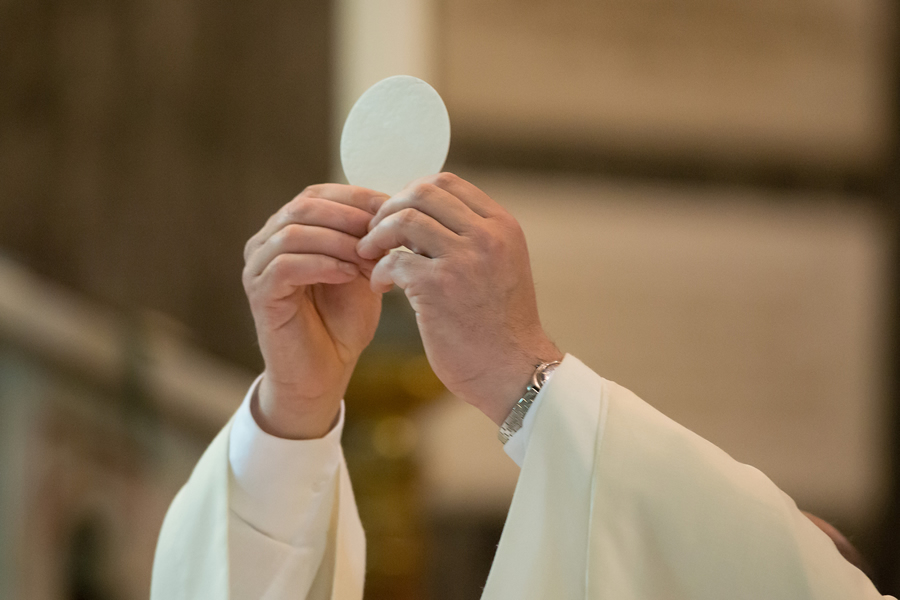
The Eucharist
01-24-2021Weekly ReflectionJen Arnold, M.A. in Theology and CatecheticsThe Eucharist is the next Sacrament we will explore as we continue our journey through the seven sacraments of the Catholic Church. It is the third and final sacrament of initiation and the completion of our unification to the family of God and the Mystical Body of Christ.
The Catechism quotes Lumen Gentium (the Dogmatic Constitution of the Church from the Second Vatican Council) saying, the Eucharist is “the source and summit of the Christian life” (CCC #1324). This simple statement is packed with physical and spiritual realities. The Eucharist, or Communion, binds Catholics on earth with one another as we partake in the same Body and Blood of Christ all over the Earth. It unites us to Jesus Christ in His one sacrifice on Calvary. It joins us to the ongoing liturgy that takes place in heaven as all who have gone before us worship at the same heavenly altar. Furthermore, it is the continual font by which God bestows sanctifying grace upon us each time we partake – the nourishment we need to sustain our spiritual life. Imagine the Eucharist at the center of a cross and see it as the central point at which all of the horizontal and vertical relationships in the mystical Body of Christ come together (CCC #1324-1327).
READ MORE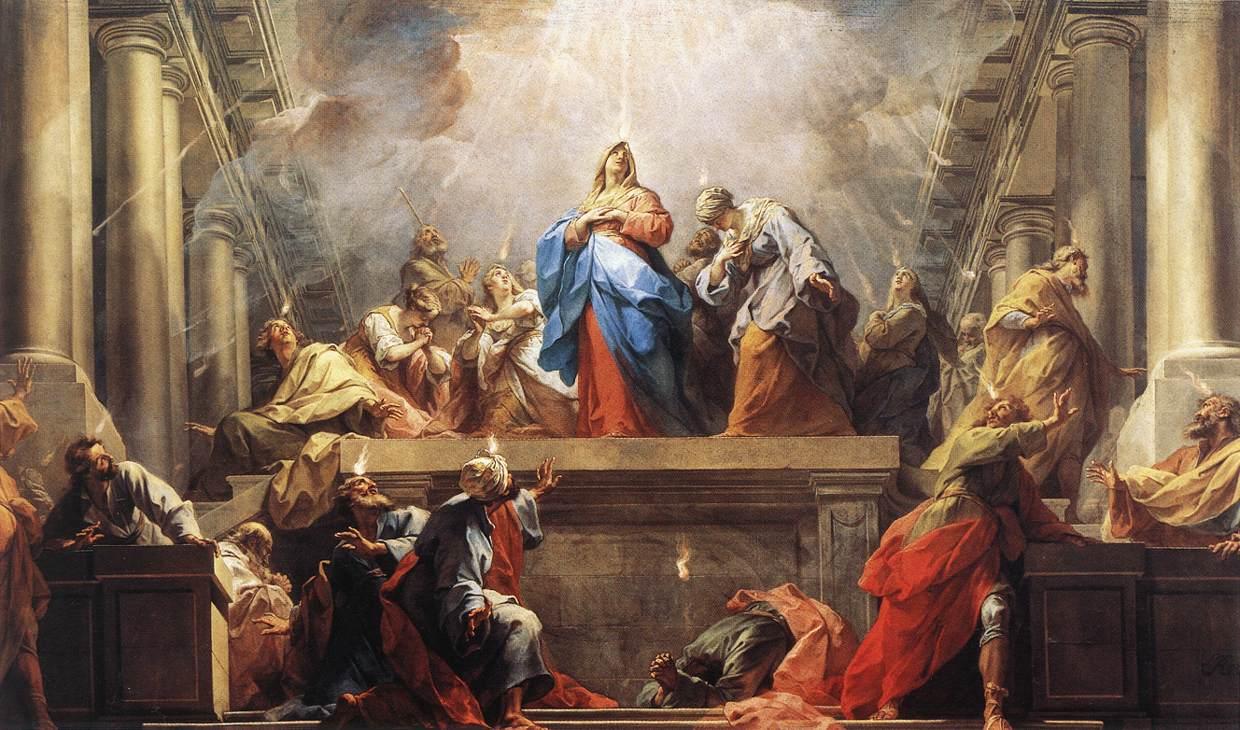
Confirmation
01-17-2021Weekly ReflectionJen Arnold, M.A. in Theology and CatecheticsThis week, as we continue our examination of the seven Sacraments, we will take a closer look at the Sacrament of Confirmation.
The Catechism places Confirmation after Baptism because this Sacrament is the completion of the graces received at Baptism. “For ‘by the sacrament of Confirmation, [the baptized] are more perfectly bound to the Church and are enriched with a special strength of the Holy Spirit. Hence they are, as true witnesses of Christ, more strictly obliged to spread and defend the faith by word and deed’” (CCC #1285). So, the graces received at baptism are fortified by the graces received in Confirmation in order to strengthen the faithful in their call to evangelize and defend the Faith.
Confirmation was instituted by Christ Himself and uses physical means to communicate heavenly realities, which, if you recall from last week, are the two defining components of a sacrament. Jesus promised an outpouring of the Holy Spirit many times to His disciples. These promises came to their fulfillment on Pentecost. The Holy Spirit descended upon the upper room and empowered the Apostles to go out and proclaim to the thousands gathered “the mighty works of God” in their own languages. Then those who were converted also received the gifts of the Holy Spirit (CCC #1286). Further, there are three New Testament scriptural references (Acts 8:15-17, Acts 19:5-6, Hebrews 6:2) in which the Apostles apply the laying on of hands – imparting the gifts of the Spirit – after Baptism. This illustrates that the teaching they received from Jesus was to confer the Sacrament of Confirmation following Baptism, in order to complete and fulfill the baptismal graces (CCC #1288). The Sacraments of Baptism and Confirmation, thereby, go hand in hand.
READ MORE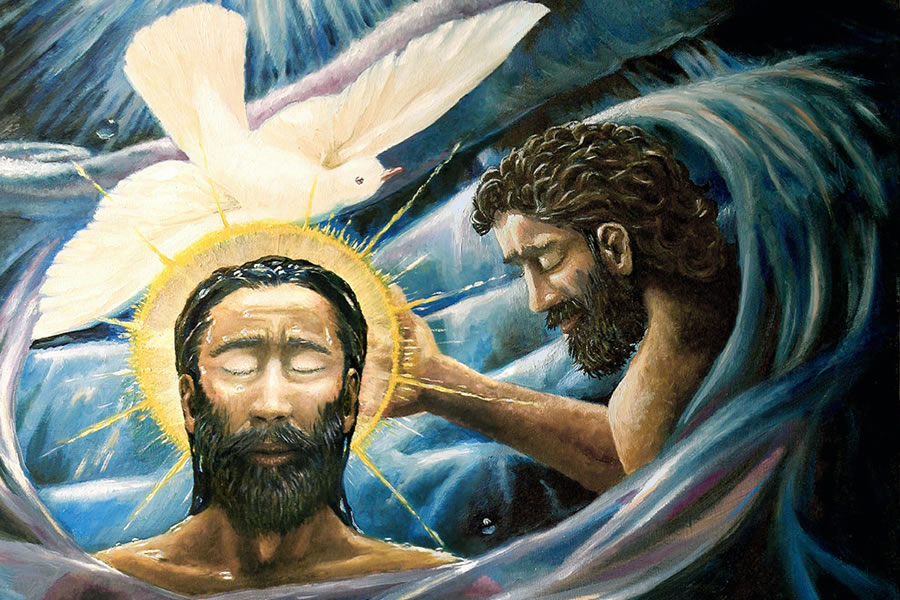
Baptism
01-10-2021Weekly ReflectionJen Arnold, M.A. in Theology and CatecheticsToday we celebrate the Baptism of our Lord, Jesus Christ. I will take this opportunity to begin a six-part series on the seven sacraments of the Catholic Church, beginning with Baptism and combining Marriage and Holy Orders later.
Let’s begin with the technical definition of a sacrament found in the glossary of the Catechism of the Catholic Church: “an efficacious sign of grace, instituted by Christ and entrusted to the Church, by which divine life is dispensed to us through the work of the Holy Spirit.” Another way of understanding the sacraments is to think of them as methods by which Jesus gifted us an opportunity to participate in the divine life through material and earthly things, and by which we receive actual graces according to the particular sacrament. Because we are physical and spiritual beings, God communicates heavenly realities to us by way of visible creation. “As a being at once body and spirit, man expresses and perceives spiritual realities through physical signs and symbols. As a social being, man needs signs and symbols to communicate with others, through language, gestures, and actions. The same holds true for his relationship with God” (CCC #1146). In simple terms, God comes down to our level in the sacraments and speaks to us in our own human means of communication.
READ MORE
The Epiphany
01-03-2021Weekly ReflectionJen Arnold, M.A. in Theology and CatecheticsToday we celebrate the feast of the Epiphany, which is the day the Magi finally arrived to worship the child, Jesus. During Advent we discussed the Magi and their importance as a representation of Jesus coming to save the entire world and not just a select few. This week, I would like to focus on the actual journey the Magi embarked upon to find Him and how we all imitate that journey as we continually seek out Jesus in our own lives.
The first point to make is that, in order to set out on a journey toward Jesus, we have to make a choice. The Magi first engaged their intellects to examine the evidence available to them, particularly the Nativity Star, and then engaged their wills to set out to see where that evidence would lead them. While it is possible to set out on some journeys with no rhyme nor reason other than seeing where the wind takes you, it cannot be so on a journey to Jesus. The Magi had a goal – an end – and they made a decision to set out and reach that end. We are called to emulate the Magi in this sense. We are called to see the things around us that point us to Jesus, evaluate them, and make a conscious decision to use those things to lead us on a journey with a concrete, ultimate end: heaven.
Now, just because the Magi had an end point to their journey, it does not mean that they had a direct, straight, and uninhibited path to the end. If it was easy and direct, it might be considered a stroll. However, the word journey tends to evoke images of hills, valleys, road construction, detours, losing one’s way, faulty GPS, running out of snacks, and vehicle trouble. Of course, the Magi did not have to suffer through many of the modern inconveniences I mentioned, but they certainly had their fair share of difficulty, as something is always bound to go awry if one travels for any significant length of distance to reach an end. To embark upon a journey implies taking on some risks. Psalm 121 is often referred to as the traveler’s psalm and calls to mind some of this risk, but also reminds us from where our strength comes as we endure what lies between us and our goal. Psalm 121 begins, “I lift my eyes to the hills. From where does my help come? My help comes from the Lord, who made heaven and earth.” Right away, the speaker sees the obstacles right in front of him, the hills, but keeps his eyes on the top, the goal. He does not look at the certain arduousness of the coming journey, beginning at the base of the hills. Rather, he affixes his gaze upon the goal and recognizes from where his strength and help will come, which is God.
READ MORE